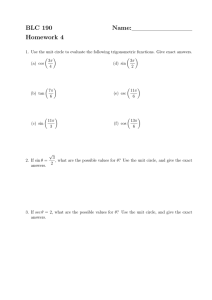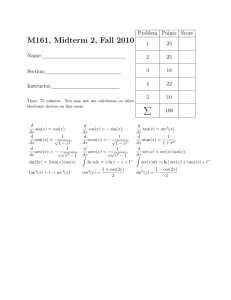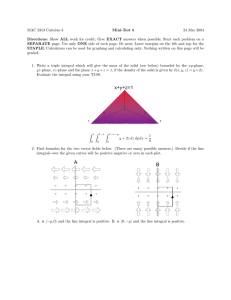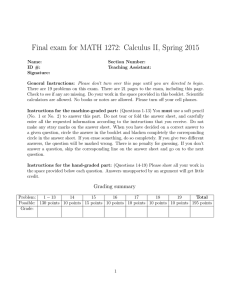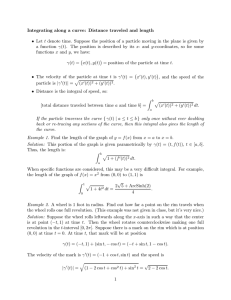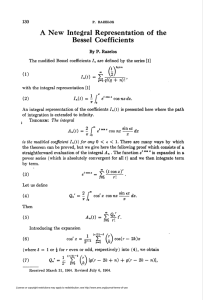MATH 1260 - Quiz 9 Solution
advertisement
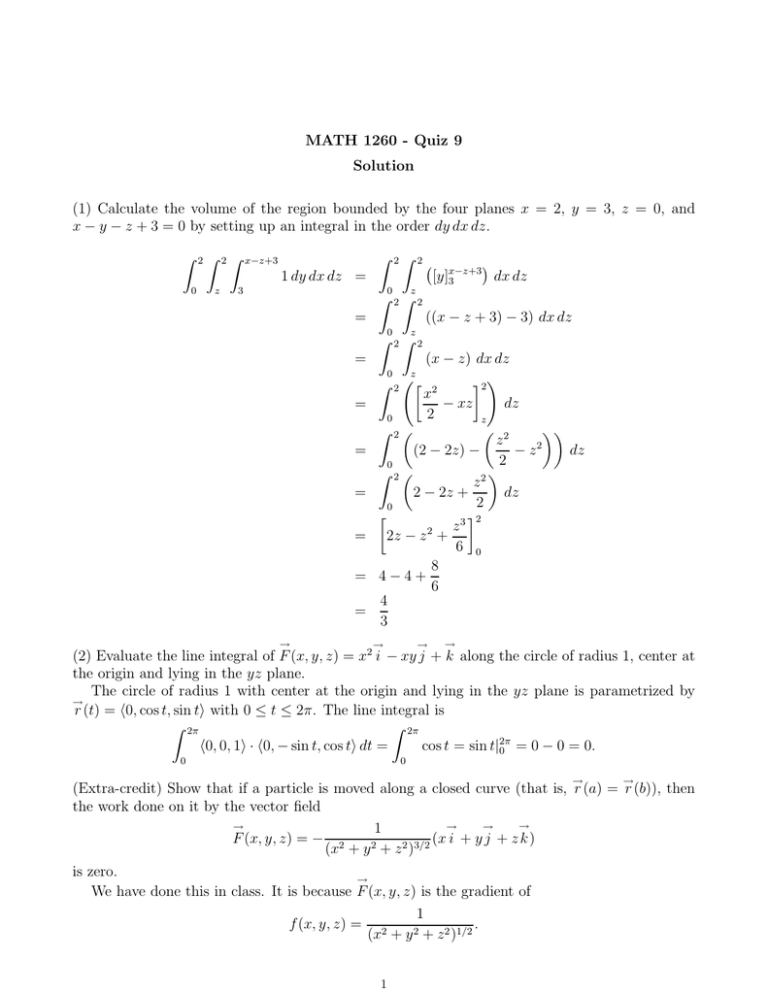
MATH 1260 - Quiz 9 Solution (1) Calculate the volume of the region bounded by the four planes x = 2, y = 3, z = 0, and x − y − z + 3 = 0 by setting up an integral in the order dy dx dz. Z 2Z 0 2 z Z x−z+3 1 dy dx dz = 3 = Z 2Z Z0 2 Zz 2 Z 2Z = = = = = → ((x − z + 3) − 3) dx dz 2 (x − z) dx dz 2 ! Z 2 2 x − xz dz 2 0 z 2 Z 2 z 2 dz −z (2 − 2z) − 2 0 Z 2 z2 dz 2 − 2z + 2 0 2 z3 2 2z − z + 6 0 8 4−4+ 6 4 3 0 = [y]x−z+3 dx dz 3 z 0 = 2 → z → → (2) Evaluate the line integral of F (x, y, z) = x2 i − xy j + k along the circle of radius 1, center at the origin and lying in the yz plane. The circle of radius 1 with center at the origin and lying in the yz plane is parametrized by → r (t) = h0, cos t, sin ti with 0 ≤ t ≤ 2π. The line integral is Z 2π Z 2π h0, 0, 1i · h0, − sin t, cos ti dt = cos t = sin t|2π 0 = 0 − 0 = 0. 0 0 → → (Extra-credit) Show that if a particle is moved along a closed curve (that is, r (a) = r (b)), then the work done on it by the vector field → → → → 1 (x i + y j + z k) F (x, y, z) = − 2 (x + y 2 + z 2 )3/2 is zero. → We have done this in class. It is because F (x, y, z) is the gradient of f (x, y, z) = (x2 1 1 . + + z 2 )1/2 y2






